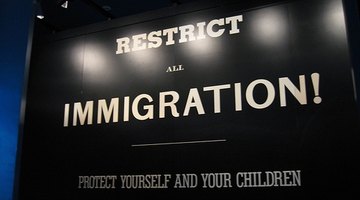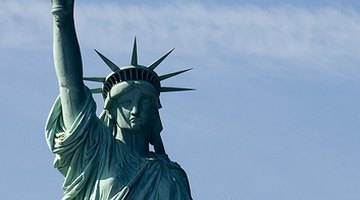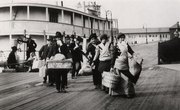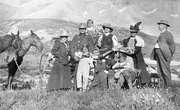Europeans coming to the United States made up 80 percent of all 19th century immigrants, with the remainder arriving from Asia, Mexico and Canada. They came in two distinct waves, from 1845 to 1860 and 1880 to 1910. Most came seeking economic opportunities or to join family already living in America, but many Eastern Europeans fled their homes to escape political and religious persecution.
Which Nationality Immigrated the Most?
About 2.5 million Irish people came to the United States, second only to the 3 million German immigrants. Nearly two-thirds of Irish immigrants came during the potato famine of 1846-1855, while the Germans arrived in more sporadic bursts, though 80 percent of them arrived after 1850. The biggest surge in German immigration came between 1881-1885, when more than a million people came to America, mostly German Jews escaping religious intolerance.
When Was Forced Labor Banned?
It became illegal to import slaves after 1808, the first year the U.S. Constitution allowed an end to the slave trade. This led to an increase in indentured servants, a practice not banned until 1868.
How Were Immigrants Processed?
Until 1855, immigrants were not processed. After arriving in America, they were allowed to settle as they pleased. That changed in 1855 when the federal government opened Castle Garden, a converted fort, on the southern tip of Manhattan. While an exact number is not known, it is estimated that Castle Garden processed between 8-12 million European immigrants before it was closed in 1892, the year the Ellis Island Immigrant Station opened. Fully 70 percent of all immigrants entering the United States between 1892 and 1954 were processed at Ellis Island.
Immigrants not arriving at Castle Garden were often registered by state officials, until a Supreme Court decision in 1875 made it the federal government's responsibility. By 1891, the U.S. government had completely taken over inspecting and processing immigrants.
What Restrictions Were Placed on Immigration?

Ellis Island rejected only 2 percent of those applying for admission to the United States. They were denied for reasons of physical or mental health. The federal government developed strict restrictions regarding Chinese immigrants, however. After nearly 300,000 Chinese people arrived in the western United States following the Burlingame Act of 1868 encouraging Chinese immigration, Congress passed the Chinese Exclusion Act of 1882. This temporary act banned all immigration from China. Made a permanent act in 1904, it was repealed in 1943 to appease China, a U.S. ally during World War II.
Beginning in 1885, Congress passed a series of Alien Contract Labor Laws prohibiting immigrants from coming to the country with a job already waiting for them. Exceptions were made for the arts and academics.
Where Did Immigrants Settle?
German immigrants, most of them skilled laborers or farmers, mostly settled in the Midwest, though they also established large communities in rural New York and Pennsylvania. Scandinavian immigrants headed for the upper Midwest, while French Canadians relocated to New England. Irish immigrants took to New England and the Great Lakes region. Chinese settlers remained on the West Coast, while Mexicans journeyed throughout the Southwest. Slavs and Poles turned to urban centers in search of manufacturing jobs. Italian and Jewish immigrants stayed largely in big cities.
Related Articles
Writer Bio
Over the course of a 15-year career, John Briggs has written for print and online clients. As a syndicated TV critic, his work appeared in some of the country's top dailies. He has a degree in political science from Temple University and took additional writing classes at NYU.











